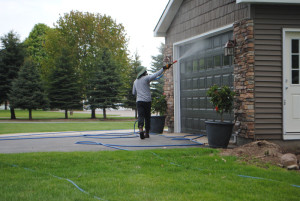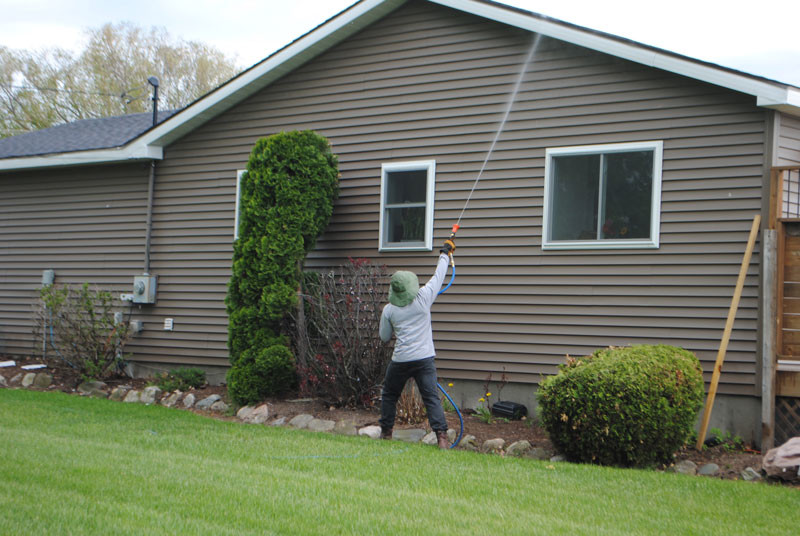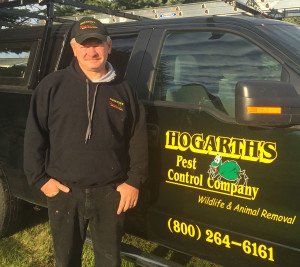Carpenter ants. You’ve seen them— the black, oversized bodies with pinchers on their faces. Aptly named after their nest building, carpenter ants burrow smooth tunnels in wood and are commonly referred to as the “Michigan termite”. Rather than eating the wood, they excavate to make their nests. This poses a threat for property owners if they gain access to a structure. Early detection is key! Unlike the termite, it takes years for their destruction to cause significant structural damage; however, it is still important to remain proactive in the prevention of an infestation.
But what do they do?
Carpenter ants attack wood that has been damaged by mold or water. While they begin with the weakened wood, they move deeper and can easily burrow in the dry, undamaged wood. In the wild, these ants make their homes in fallen trees, hollowed-out stumps, rotting fence posts, and under logs/lumber. However, water damaged wood around a structure or home is also alluring to carpenter ants. Homeowners will commonly find an infestation in areas that have experienced flooding such as kitchens and bathrooms. These ants gain access to structures through the damaged areas; as well as through cracks around doors, windows, plumbing, and electrical holes. If there are tree branches or electrical wires touching the structure, they can use those as a means to enter as well. Once inside, they begin to build their colonies.
The parent colony houses the queen, eggs, and young. Satellite colonies may branch off from the main but only once the parent colony is mature, which can take years. The workers and winged ants emerge from the pupae in the late summer months and begin mating flights. This process is called swarming and can be quite a disturbance for homeowners as it is a sign of an infestation. In some cases however, a homeowner may become aware of an infestation by hearing a rustling in the walls. Other signs of an infestation in the home include finding sawdust piles around the home, or seeing small holes in wood.
Carpenter ants are most active during dusk and dawn, though they can be seen out in broad daylight. They feed on plant and fruit juices as well as insects and other arthropods and will forage for food up to 700 feet from their nest in the wild. In the home, they enjoy kitchen grease, meats, sweets, and eggs.
Tips to prevent
- Proper identification is key!
- Trim branches and bushes from structure.
- Be sure to fix and replace any water-damaged wood
- Have an exterior preventative treatment applied to your structure. The best time to do is in the spring; however, if you have an infestation you should get treated by a professional immediately.
- Keep food stored in airtight containers
If you believe to have found a carpenter ant in your home or structure, it is important to call a licensed pest control professional. While carpenter ant damage is slow-moving, these pests are best dealt with sooner than later. The first line of self defense a homeowner with an assumed infestation turns to is typically self-treating with store bought pyrethrin pesticides such as Ortho® Home Defense®. While this may seem to alleviate the issue, it will only kill the ants being seen and drive more ants inside the home! To eradicate a colony, the queen must be killed and store bought pesticides will simply not do the job. The best course of action is to work with a pest control professional to ensure proper and lasting eradication. Not only will a professional rid your home of ants, but they will also provide you with tips and additional services to prevent re-entry.
Hogarth’s Pest Control & Wildlife Removal specializes in these types of jobs and the exclusion work required to prevent it from happening again. We work with you on creating a program best-suited to your needs. Hogarth’s Pest Control & Wildlife Removal has been eradicating carpenter ant colonies in Northern Michigan for over 25 years, and we do not stop until the job is done!



 March, 26th 2014 — The Traverse City Record Eagle highlights Hogarth’s Pest Control owner/operator Ken Hogarth. He forecasts what looks to be an intense season for mosquitoes, having seen fluctuations in past populations. Female mosquitoes lay their eggs in stagnant water. Winters with heavy snow accumulation directly corelate to an increase in mosquito populations. So, judging by the snow fall this winter there’s bound to be quite a bit of standing water as temperatures rise. Mosquito breeding grounds consist of lakes, ponds, puddles and marshes. These nuisance pests create quite a problem in Northern Michigan; on mosquito-intensive years we receive an uptick in service calls as a result. To read the full article,
March, 26th 2014 — The Traverse City Record Eagle highlights Hogarth’s Pest Control owner/operator Ken Hogarth. He forecasts what looks to be an intense season for mosquitoes, having seen fluctuations in past populations. Female mosquitoes lay their eggs in stagnant water. Winters with heavy snow accumulation directly corelate to an increase in mosquito populations. So, judging by the snow fall this winter there’s bound to be quite a bit of standing water as temperatures rise. Mosquito breeding grounds consist of lakes, ponds, puddles and marshes. These nuisance pests create quite a problem in Northern Michigan; on mosquito-intensive years we receive an uptick in service calls as a result. To read the full article,